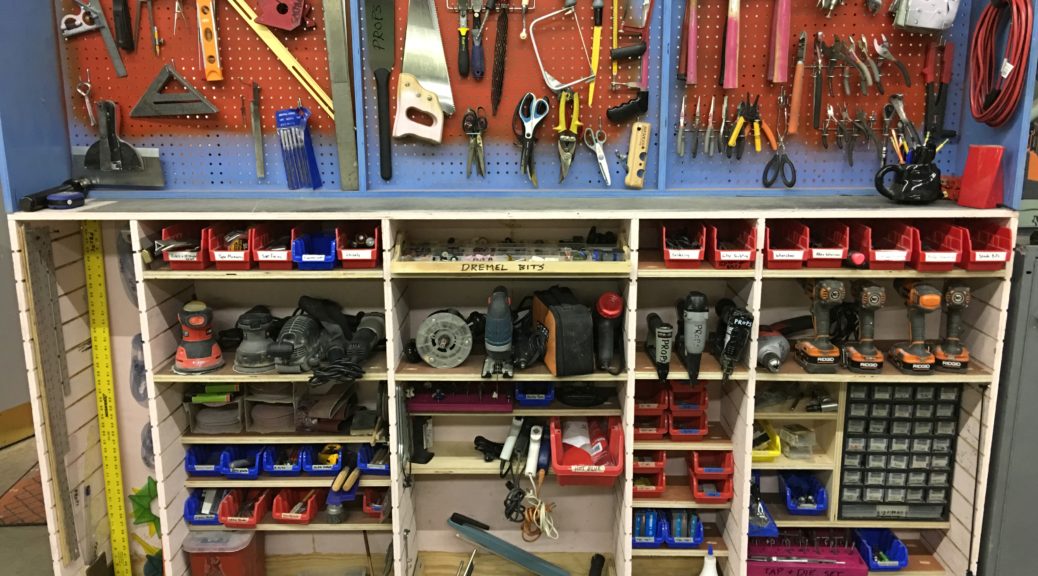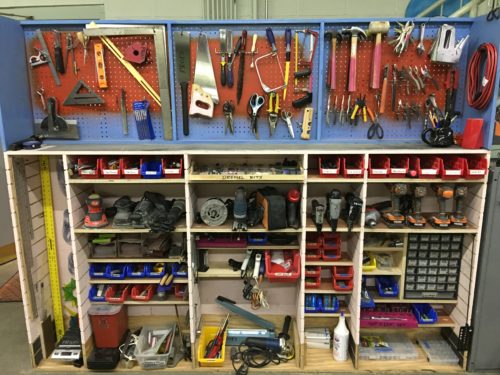The following comes from a 1954 article and talks about where props retire to after their Broadway career:
By Arthur Gelb
When “Kind Sir” closed last spring, Joshua Logan like other producers before him, tackled a recurrent and vexing problem: What to do with a show’s props after they have been sat on, gazed upon or wielded for the last time.
Over the years, resourceful producers have evolved a carload of methods for converting superannuated trappings into cash, but Mr. Logan, in an entrepreneurial flash, thought up a new wrinkle. After finding that the authentic pieces he had picked up in Paris and London would fetch only a fraction of their worth at local antique shops, he decided to unload them on the highest bidders.
The Parke-Bernet Galleries were commissioned to auction off the props and, although it rained the day of the public sale, thereby reducing the attendance, Mr. Logan still netted more than a quarter of the original expenditure of $12,000. There were twenty-six lots in all, the highest being $825 for a Steinway grand and the lowest, $35, for three tea trays.
Mr. Logan’s off-stage success, in this era of costly play production, may well spur some of his hard-pressed confreres to follow suit. Actually, when a show has been a rousing financial hit, no one worries unduly about what will happen to the well-worn set decorations. But in the case of flops or modest runs, whatever money can be realized on the still shiny items of furniture, bric-a-brac and costumes is sought—eagerly.
Other Methods
In contrast with Mr. Logan’s innovation, most producers rely on less spectacular methods for prop disposal. They sell or rent items to TV studios, or sell them to out-of-town theatres or second-hand shops. Occasionally, props are stored for future use by the more active of the producing concerns. Sometimes they are burned (when there are no buyers and the price of storage is too high). Once in a while, choice items find their way into the homes of producers and other upper-echelon members of the company.
There are several known instances of showmen having furnished their homes and offices with chairs, couches, tables, lamps and other odds and ends selected for their productions by scenic designers. One producer foresightedly decorated a set with numerous volumes of second-hand books he had always wanted to read. (They now fill two wall-length cases in his home.) And a producing firm, now defunct, got off to an elegant start by furnishing its offices in midtown with Victorian pieces donated by the Shuberts’ warehouse. The furniture—orphaned by dead musical comedies—included two secretaries, a crystal chandelier and garlande mirrors and perfume tables.
Some producers appropriate items of trifling value from the sets of their plays as mementoes of the production. Producer Harald Bromley, for instance, saved a pair of angels on pedestals that were designed for “Glad Tidings,” and later planted them on either side of the stage as a special decoration for “Dead Pigeon.” Between plays, the angels rest at Mr. Bromley’s country home in Brewster, N. Y. Miss Theresa Helburn of the Theatre Guild, has no less than forty items, all from Guild productions, decorating her office. They include a tartan from “Mary of Scotland,” a prop star from “Carousel,” a garter from “Oklahoma!,” a dagger from “Othello,” a gold bracelet from “Time of Your Life,” a gold fan from “Taming of the Shrew,” a shoe from “Caesar and Cleopatra” and a cigarette from “Idiot’s Delight.”
Leading ladies like Helen Hayes frequently keep favorite costumes for sentiment’s sake after their plays close, but leading men tend to abandon theirs—and they often seem to turn up on press agents. A green slipover worn by Lee Cobb in “Death of a Salesman” found its way to publicity man Arthur Cantor; another press agent is still wearing a gray flannel suit that was part of the debris from a flop called “The Biggest Thief in Town” a few seasons ago.
Supporting actors and actresses, when they do not find themselves the recipients of free stage paraphernalia, are known to put in modest bids for useful items. Thus, a set of $450 draperies used in last season’s “The Prescott Proposals” was acquired for $25 by an enterprising family man. It is probable that an attractive apartment could be furnished very inexpensively by this sort of shopping around; anyone who plans to go about furnishing his quarters in this way merely needs unlimited patience, a taste that doesn’t conflict with that of the producer’s wife, and an eye for a flop (furnishings from hit shows are apt to be pretty threadbare by the end of a run).
Working Props
Some props, of course, are fairly impervious to wear and tear, but the producer knows this as well as you do and the chances are he will store the hardier items. Take “Angel in the Pawnshop.” More than 1,000 antiques and other pieces were displayed on the stage during its run a few seasons back. The producers stored most of them in their New Jersey warehouse and have since found a practical use for many of them. The musical instruments were used in “Hazel Flagg” and “Two on the Aisle.” “The Girl in the Pink Tights” had a French restaurant scene in which many of the “Pawnshop” props appeared; the umbrella with which Jeanmaire made her entrance in the same show was also from “Pawnshop.” Between shows, the props are rented out to TV studios.
Producers sometimes practically are forced to give away their painstakingly executed sets and costumes. Mike Todd had to sell his $200,000 “Night in Venice” scenery (for the operetta produced in 1952-53 at Jones Beach) to New York State for $750 because it would have been too expensive to dismantle it and ship it back to Manhattan for storage. The state intends to use the lumber for its parks.
Also disposed of at bargain prices not too long ago were the props and costumes from “Carnival in Flanders.” Some of the gowns went to Minsky’s burlesque in Newark. Minsky’s abbreviated the bodices.
Gelb, Arthur. “Whither Go Those Props?â€Â The New York Times, 21 Nov. 1954, p. X3.



